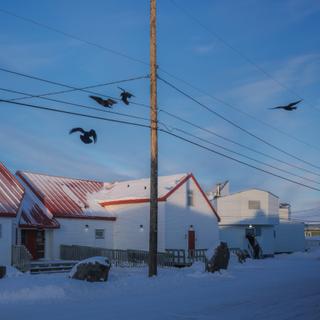


The invisible poison threatening Arctic communities
GalleryIn her project "Under the Ice of the Arctic, Mercury," French photographer Juliette Pavy reveals an alarming reality unfolding far from the public eye: The increasing exposure of Indigenous populations in Greenland and Nunavut to concerning levels of methylmercury.
While Greenland draws international geopolitical interest, particularly after Donald Trump's expressed wish to control the country, the social reality of the Inuit remains largely overshadowed by the prospects of exploiting natural resources. Greenlandic society finds itself on the frontline of unprecedented permafrost thawing – a frozen soil layer covering a quarter of the Northern Hemisphere's land – which is gradually releasing long-trapped toxic substances. Double victims, these populations face the direct consequences of climate change while remaining on the fringes of decisions made by Denmark regarding their territory, as Greenland still heavily relies on Danish funding.
Among the toxic substances released by permafrost thaw, methylmercury particularly worries scientists. This organic form of mercury, the most widespread in aquatic environments, accumulates in living organisms, from the smallest insects to predatory fish, creating a bioaccumulation effect along the food chain. The consequences for humans can be severe. Methylmercury attacks the nervous system and is particularly harmful to fetuses and young children, whose neurological development can be irreversibly compromised. These risks have led the World Health Organization to list this substance among the 10 most concerning pollutants for public health.
At the beginning of 2024, photographer Juliette Pavy immersed herself in Inuit communities to document the consequences of methylmercury pollution in the Canadian territory of Nunavut. "A study conducted by toxicologist Brian D. Laird on nearly 36 communities in Canada showed that seals are the primary source of mercury exposure for Arctic peoples," she said, "accounting for nearly 59% of contaminations." She shares the testimony of a hunter from Nunavut she met: "The Inuit do not eat the oldest seals. They leave them for the dogs because they taste bad due to accumulated mercury."
You have 64.07% of this article left to read. The rest is for subscribers only.
